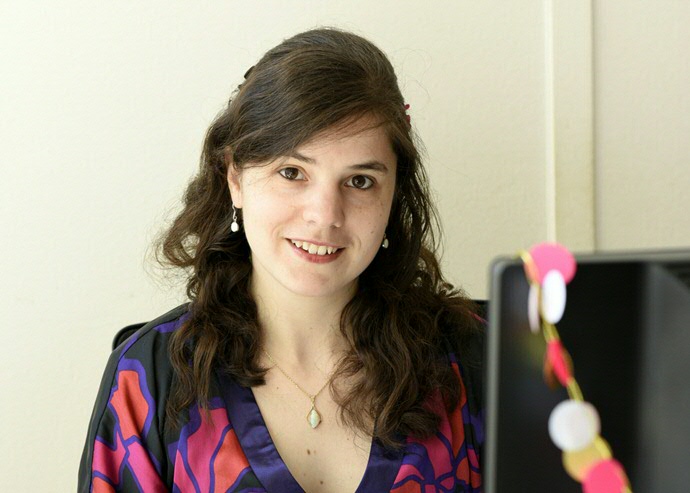Looking for 'early warning signals'

Psychologist and methodologist Laura Bringmann conducts theoretical and statistically focused psychological research. That may seem abstract, but Bringmann wants to be able to help improve treatments for people with mental disorders. And she would like to help improve science policy.
It’s sexy among methodologists in psychology: network analysis. This approach no longer assumes one underlying cause of various symptoms, depression for instance. No, it is the symptoms that influence each other, and the relationships between these symptoms can differ in every one of us. ‘If I don’t sleep very well’, explains Laura Bringmann, ‘there is a greater chance that I will feel down. It is not because of a disorder that I feel down, but not sleeping well itself influences how I feel.’
Hip and confusing
Apps that you can use to track your emotions have been around for a few years now. ‘It is getting easier for people to measure how they are doing. Such apps are also used in scientific research, also to look at whether the collected data is of predictive value for people, for instance as depression arises or worsens.’ For her PhD, which she completed in Leuven in 2016, Bringmann developed a statistical model to analyse patterns of interaction between different symptoms. Network analysis, she explains, is data transformed into images that show interactions. ‘Hip but also very confusing. People talk about networks when they often mean simple correlations. You can present any model with multiple variables as a network. That is why I called my thesis: Dynamical networks in psychology: more than a pretty picture?’ This is characteristic of the philosopher in Laura Bringmann: asking herself and others what exactly is being measured. Does this say enough about the reality?
Practice is close
She couldn’t believe her luck when she was made assistant professor in Groningen in November 2016. ‘My dream job unexpectedly became available. A career track with the prospect of a permanent appointment. Statistics and psychometrics in interdisciplinary collaboration with mathematicians and methodologists. Working closely with really good clinical psychologists such as Peter de Jonge from the UG and Marieke Wichers from the UMCG. The opportunity to start something new, where we can also test with patients. I want to know what we can do with data that we can now collect so easily, which questions we should ask to be able to develop early warning signals for patients.’ Early warning signals tell patients if their symptoms are heading the wrong way and action needs to be taken. ‘In Groningen the clinical practice is close to the University. I regularly meet therapists and patients at the UMCG.’
Involve social network
‘In the end I want to help improve our treatments for people with mental disorders such as depression or anxiety disorders. I think that we reduce mental symptoms much too much to the individual. We should include the social context more.’ Bringmann also thinks that clients’ social networks should have a greater involvement in the treatment. For her own work this means the question of which data is needed to create links between peoples’ social networks and the emotions they experience.
Custom grants
Her enthusiasm and energy have not gone unnoticed. Laura Bringmann has been invited to join Young Academy Groningen. This club of very talented and ambitious young researchers from all manner of disciplines wants to work together to broaden, enrich and improve science. ‘We hold events with questions such as: how do we practise good science? How do we present our results? Wouldn’t it be great to hold interdisciplinary workshops for young researchers? Each discipline has its own methods. What can you learn from them? I hope to participate in the policy workgroup. Together with faculty deans and the Board of the University this looks at how UG and national science policy can be improved. I would like to see grants that are more tailored to need. This would increase the success rate of proposals.’
Text: Angela Rijnen. This article was taken from GMW magazine
More news
-
23 October 2025
Nine UG researchers awarded Vidi grant
-
07 October 2025
What art does to us
